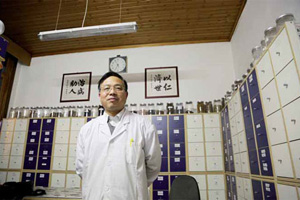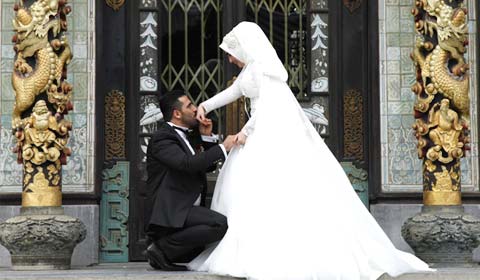China-British relations
( Chinadaily.com.cn ) Updated: 2013-11-20 15:32:32Eight “Mosts” between China and the UK
1. UK is the first western power to recognize the new China.
2. UK is most open and optimistic towards China’s economic development.
3. UK is the European country which likes China most. (According to the data from Pew Research Center in July, 48 percent of the UK people hold a favorable impression towards China, the highest rate among the European countries)
4. UK is China’s major trading partner, with the fastest growth of trade volume with us in the EU. In the past six years, trade volume between the two has doubled; over the past four years, China’s exports to the UK have doubled. In 2012, the Sino-British trade volume was $63.1 billion, increasing by 7.5 percent year-on-year. Of that, China’s exports were $46.3 billion, increasing by 4.9 percent and imports $16.8 billion, increasing by 15.5 percent. From January to September this year, the bilateral trade volume reached $49.42 billion, increasing by 5.7%. Of that,China’s exports were $35.9 billion, increasing by 5.1 percent and imports $13.52 billion, increasing by 7.3 percent)
5. China’s investment in the UK has the fastest growth rate.
6. UK is the largest overseas market of RMB, accounting for 62 percent of RMB’s overseas market.
7. UK is the first western country to sign a currency-swap agreement worth 20 billion pounds ($32.4 billion).
8. UK has the most Chinese students and Confucius Institutes and Confucius classes among the EU countries. (At present, we have about 120,000 people studying in the UK and 24 Confucius Institutes and 76 Confucius classes).
Peaceful and mild diplomatic period with sporadic setbacks
The United Kingdom of Great Britain and Northern Ireland recognized the People's Republic of China in 1950. Bilateral relations hit rock bottom with the outbreak of the Korean War but gradually turned better after the war. The two sides reached an agreement to exchange charges d'affaires on June 17, 1954.
Despite building diplomatic relations on the charge d'affaires level, the two countries still had some differences on some fundamental issues such as the Taiwan question and the Hong Kong situation. It was not until the 1960s that bilateral relations began to normalize. The two sides finally signed the Joint Communiqué on the Agreement on the Exchange of Ambassadors on 13 March 1972.
In October 1979, Premier Hua Guofeng visited the UK, while Prime Minister Margaret Thatcher paid a visit to China in September 1982 and met former Chinese leader Deng Xiaoping. The pair discussed the future of Hong Kong and agreed on the "one country, two systems" formula for Hong Kong.
Prime Minister Thatcher made her second visit to China in December 1984, during which time the two governments signed The Joint Declaration on the Question of Hong Kong, which paved the way for Hong Kong's return to China in 1997 and ushered in a period of sound development in Sino-British relations.
On the Chinese side, the then-Chinese Premier visited the UK in June 1985 and Hu Yaobang, General Secretary of the Central Committee of the CPC, paid a visit to the UK in June 1986. On the British side, Queen Elizabeth II paid a state visit to China in October 1986.
Bilateral relations suffered a serious setback following the UK's sanctions against China after 1989. Prime Minister John Major's visit to China in 1991 led to the thawing of the bilateral relations, which were at an all-time low after the British came up with a political reform package in Hong Kong that contravened the Joint Declaration - the principle of convergence with the Basic Law and the agreements and understandings reached between the two sides. It was not until the latter half of 1994 that any sign of improvement could be seen.
- China, UK to offer education for Chinese children
- China, UK agree to upgrade economic cooperation
- China, UK to boost trade ties
- China, UK to hold economic, financial dialogue
- China, UK set to resume high-level dialogue
- China and UK to up science collaboration
- Premier urges China-UK co-op on int'l affairs
- China-UK trade in robust growth despite euro crisis
European Weekly
 Gear change
Gear change
'Sustainable development', 'decisive role for markets' are the new buzzwords for Chinese economy.












